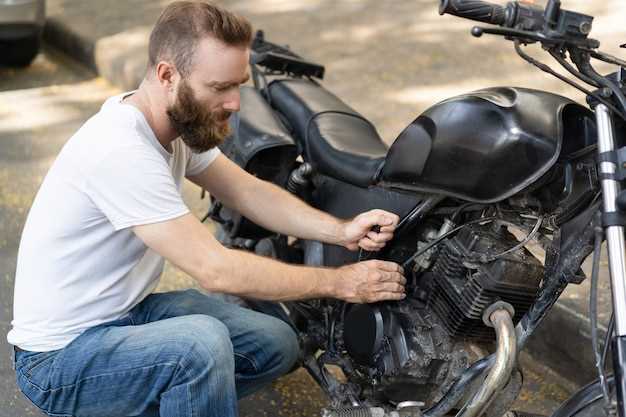

Owning a motorcycle is not just about the thrill of riding; it’s also about responsibility and maintenance. A well-maintained bike not only enhances your riding experience but also ensures your safety on the road. Understanding some essential home maintenance tips can empower every rider to keep their motorcycle in optimal condition without the need for costly repairs.
Regular maintenance tasks such as checking fluid levels, inspecting brake pads, and cleaning the chain can be easily accomplished at home. Developing a consistent maintenance routine will not only prolong the life of your motorcycle but will also help you detect potential problems before they escalate into significant repairs. Knowing the basics can save you time and money, allowing you to focus more on enjoying the ride.
In this article, we will explore practical tips that every motorcycle rider should follow at home. Whether you’re a novice or an experienced rider, these straightforward guidelines on maintenance will help you keep your bike running smoothly and efficiently. Let’s dive into the essential aspects of motorcycle upkeep that every rider should master.
Inspecting and Replacing Motorcycle Fluids

Regular inspection and replacement of motorcycle fluids are essential for maintaining optimal performance and longevity. As a DIY enthusiast, understanding the importance of each fluid type and how to check and replace them can save you both time and money during repairs.
Start with the engine oil, which lubricates and protects engine components. To check the oil level, use the dipstick, ensuring the motorcycle is on a level surface. If the oil is dark or gritty, it’s time for a change. Follow your manufacturer’s recommendations for oil type and change intervals. When replacing, consider using an oil filter for enhanced performance.
The coolant system is another critical area. Inspect the coolant levels in the reservoir; low levels may indicate a leak. If the coolant looks discolored or dirty, a replacement is necessary. Always use the recommended coolant type to prevent engine overheating.
Brake fluid is vital for safety. Check the fluid level in the reservoir; if it’s low or has turned dark, bleed the brakes and replace the fluid. Be mindful of using the appropriate type of brake fluid, as using the wrong one can damage the braking system.
Transmission fluid is crucial for smooth gear shifts. Inspect the level and condition according to the service manual. If it appears burnt or has a strange odor, it needs replacement. Regularly changing transmission fluid can enhance shifting performance and prolong the drivetrain’s life.
Lastly, do not overlook the hydraulic fluid for the clutch system. Low fluid levels can lead to clutch failure; hence, it is critical to ensure it’s topped up and replaced when necessary.
By diligently inspecting and replacing these fluids, you can easily contribute to your motorcycle’s reliability and performance while enjoying the satisfaction that comes with DIY repairs.
DIY Tire Maintenance and Replacement Techniques

Proper tire maintenance is crucial for every motorcycle rider aiming for safety and performance. Regular inspections can help identify wear and tear before they become serious issues. Start by checking tire pressure with a reliable gauge. Inflate tires to the manufacturer’s recommended PSI, as incorrect pressure can affect handling and fuel efficiency.
Next, inspect the tread depth. Use a tread depth gauge or the penny test; insert a penny into the groove with Lincoln’s head down. If you can see all of Lincoln’s head, it’s time for a replacement. Additionally, examine the sidewalls for punctures, cracks, or bulges, as these can lead to tire failure.
If you notice minor punctures, you can attempt a DIY repair. Always use an appropriate tire repair kit, which typically includes rubber plugs and adhesives. Begin by removing the tire using a tire lever, and locate the puncture. Clean the area, apply the rubber plug, and ensure it seals correctly before reassembling the tire. Inflate to the correct pressure and check for leaks.
Should you need to replace a tire, follow a similar process to remove the old tire, ensuring you have the right tools: tire levers, a bead breaker, and a torque wrench. Always consult your motorcycle’s manual for guidance on tire specifications and replacement techniques. After removing the tire, clean the rim and install the new tire carefully, making sure to align it properly with the valve stem.
Once the new tire is in place, inflate it gradually, checking for even seating on the rim. After completing this, balance the tire before mounting it back on your motorcycle, as unbalanced tires can lead to poor handling and uneven wear. Regular DIY tire maintenance ensures longer tire life and enhances your riding experience.
Cleaning and Lubricating the Chain: A Step-by-Step Guide
Maintaining your motorcycle chain is essential for smooth operation and longevity. A clean and well-lubricated chain enhances performance and ensures a safe riding experience. Follow this DIY guide for effective chain maintenance at home.
Step 1: Gather Your Tools and Supplies
Before you start, you need the following items: a chain cleaning solution, a soft brush or toothbrush, a rag or cloth, motorcycle chain lubricant, and a suitable tool to elevate your motorcycle (like a stand or paddock stand).
Step 2: Elevate Your Motorcycle
Use a motorcycle stand to lift the rear wheel off the ground. This allows you to freely rotate the wheel and access the entire chain without obstruction.
Step 3: Clean the Chain
Apply the chain cleaning solution generously to the chain, taking care to spray directly onto the links and rollers. Let the cleaner sit for a few minutes to break down dirt and grime. Using the soft brush, scrub the chain thoroughly to remove any built-up debris. Pay close attention to the sprockets and areas where dirt accumulates. Wipe off excess cleaner with a rag.
Step 4: Inspect the Chain
After cleaning, inspect the chain for any signs of wear, such as elongation or rust. If the chain appears damaged, consider replacing it before lubricating.
Step 5: Lubricate the Chain
Once the chain is clean and dry, it’s time to apply lubricant. Choose a high-quality motorcycle chain lubricant designed for your chain type (O-ring, X-ring, etc.). Position the lubricant nozzle as close to the chain as possible and apply it evenly while slowly rotating the rear wheel. Ensure you cover all links, allowing the lubricant to penetrate fully.
Step 6: Wipe Off Excess Lubricant
After lubrication, use a clean rag to wipe off any excess lubricant. This prevents dirt from sticking to the chain and ensures a cleaner operation during rides.
Step 7: Final Check
Once everything is clean and lubricated, double-check the tension of the chain. Adjust it according to your motorcycle’s specifications if needed. Lower your motorcycle back to the ground when finished.
Regular chain cleaning and lubrication at home will not only extend the life of your chain but also enhance your motorcycle’s performance. Aim to clean and lubricate your chain every 500–600 miles or as needed based on riding conditions.
